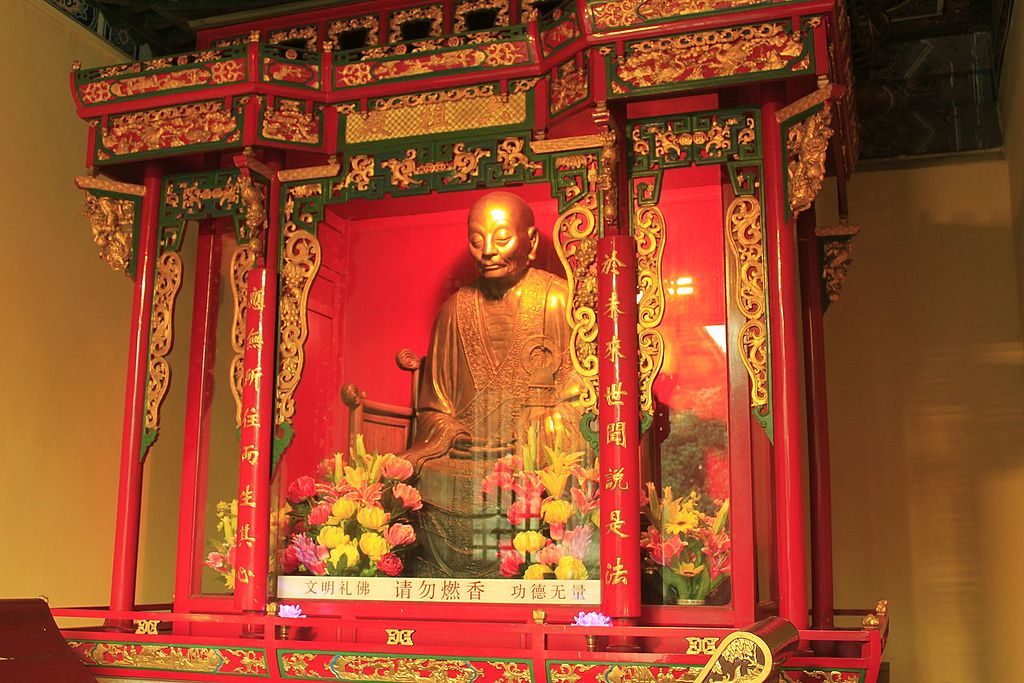“Know your mind and see your nature.
For those who are aware, there is basically no separation.”
The Platform Sutra
According to Red Pine, whose translation of the Platform Sutra is the most popular among today’s Zen practitioners, this eight-century text “has been the most studied, the most quoted, the most influential of all the texts that teach that branch of Mahayana Buddhism known as Zen.”
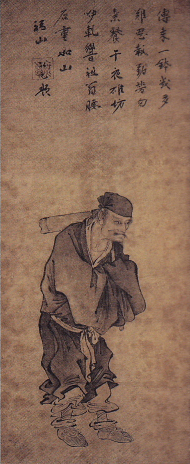
Even though Bodhidharma has been regarded as “he who had brought Zen from the West,” little is known of his teaching. In fact, of the four texts attributed to him, only one – the “Outline of Practice” – is regarded by most scholars as his work. This text, which is less than 3 pages long, lists “four all-inclusive practices”: ”suffering injustice, adapting to conditions, seeking nothing, and practicing the Dharma,” and hardly mentions the mind. The other three texts are much longer, and do focus on the mind, but they appear to have been written by contemporaries of Hui-neng belonging to the Oxhead School or the Northern School.
It is in the Platform Sutra that practitioners and scholars have looked for the origins of the radically new teachings of the Ch’an/Zen schools. The text is presented as a sermon on the Mahaprajnaparamita Sutra given by Master Hui-neng in the lecture hall of Tafan Temple. Hui-neng (638-713) is speaking to an audience including ten thousand monks, nuns, lay people, and magistrates, as well as thirty officials and thirty scholars, and, as was traditional at the time, he is standing on a raised platform. Hence the name of the Sutra.
The Platform Sutra starts with an account of Hui-neng’s early life, and the well-known narrative of his becoming the Sixth Patriarch of the Zen school after winning a verse contest (which I present in the preceding text – “Zen – Pointing directly to one’s mind”), before presenting the teachings on “sudden enlightenment” put forward by the Southern School.
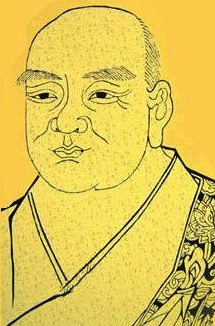
Tradition says that the text was compiled by Fa-Hai, a direct disciple of Hui-neng, soon after his death. According to modern scholarship, however, the text was reworked over several decades, with contributions by the Oxhead school and Shen-hui (684-758), also a direct disciple of Hui-neng, keen to promote his own teacher against Shen-hsiu, the precept instructor who is said to have lost the verse contest. Shen-hsiu had become Hong-jen’s official successor in what Shen-hui called the Northern School of “gradual enlightenment.” Some scholars believe that Shen-hui not only invented the story of the verse contest and transmission of the robe, but also the association of the Northern School with the doctrine of “gradual enlightenment.” We may never know, because what we know about the Northern School is what the victorious Southern School has told us about it. As things stand, Hui-neng could well have been a rather obscure figure, and it would be from Shen-hui that Zen has received its foundational teachings.
The text Red Pine selected for his translation is a manuscript recovered from the “Library Cave” in Dunhuang, which had been sealed since the 11th century, and was rediscovered at the beginning of last century. This text is older than the Tsung-Pao edition that has been read by millions of Buddhists over the centuries. In places where the two texts diverge, Red Pine has tried to assess which of the texts seemed to be the most reliable.
Buddha-nature
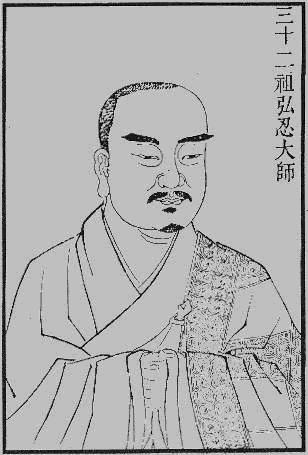
Red Pine tells us that, by Hui-neng’s day, the teaching that we all possess the buddha-nature, i.e., the inherent ability to become enlightened, had become “common knowledge among Buddhists.” And that teaching, he adds, is the foundation of Hui-neng’s teachings in the Platform Sutra. Though Hui-neng says little about the Fifth Patriarch, from whom he had received the Dharma transmission, he does mention that Hong-jen had been lecturing on the Nirvana Sutra (3rd century), where this notion first appeared. The concept of “buddha-nature” had been further developed by the Tathagatagarbha school, where the buddha-nature is referred to as a “seed” or a “womb,” interpreted either as a mere potential for buddhahood that had to be “grown” by serious practice, or, especially in China, as an inherently enlightened nature – i.e., prajna – merely concealed by the veil of our delusions, and just waiting to be uncovered.
The definition of Zen as “a transmission beyond words and scriptures, directly pointing to one’s mind” is a direct reference to the claim that, as the Platform Sutra states, we “already possess the prajna wisdom of enlightenment.” “But because our minds are deluded,” we cannot understand it by ourselves. We need “a truly good friend” to show us “the way to see our nature” (Ch. 12). Though we still need a teacher to show us the way, since “our nature,” which is the buddha-nature, is already enlightened, it will eventually be possible for us to see it directly, with our mind. The contrast between “sudden enlightenment” and “gradual enlightenment” may be better grasped as a contrast between “direct” and “indirect” enlightenment. Later in the text, we read: “Although there is only one kind of Dharma, understanding can be fast or slow. When understanding is slow, we say it’s “indirect.” And when understanding is fast, we say it’s “direct.” The Dharma isn’t direct or indirect, it’s people who are sharp or dull” (Ch. 39).
Red Pine comments that the words “prajna wisdom” are meant to differentiate prajna, usually translated as wisdom, from both mundane (practical) wisdom, and wisdom as understood in Theravada. “Prajna means ‘before knowledge’, and knowledge, (that is, the conceptual, dualistic knowledge elaborated by the intellect), according to Mahayana, is just another name for delusion. Hence, prajna is our original mind, our mind before we know anything, before there is a person who knows or something known. This non-dual nature is our original nature, our buddha nature.”
At this point, anyone who is used to the language of Theravada Buddhism is bound to feel increasingly frustrated when, one after the other, notions that had been submitted to an endless process of differentiation in order to tease out an ever more precise grasp of the truth, are now said to be … the same. The reason is that, in Theravada, the teachings are formulated in the language of dualism, which is that of the novice practitioner. It expresses the path from the standpoint of the unenlightened mind. In ancient China, and East Asia in general, though dualistic thinking was also used, an understanding and practice of intuitive thinking was still familiar. When asked to sum up their understanding of the most important matter of life and death, the monks in Hong-jen’s monastery were expected to write a poem, not a dissertation. Intuitive thought collapses opposites into an embrace of the oneness the opposites are pointing to.
So here, prajna is said to be “our original mind,” the non-dual mind, which is also what is referred to as buddha-nature, our original non-dual nature. When Hui-neng talks about what he has received from the Fifth Patriarch, he says: “I didn’t receive any instructions. The only thing he talked about was seeing our nature. He didn’t talk about meditation or liberation … Because these two teachings are not the teaching of buddhas. The teaching of buddhas is a teaching beyond duality” (Ch. 11). This is not to say that “meditation” is not to be practiced, but it is not a particular sitting practice – what Zen is often equated with. Meditation has a much wider meaning than that of a mere technique.
Non-duality
“Good friends, this Dharma teaching of mine is based on meditation and wisdom. But don’t make the mistake of thinking that meditation and wisdom are separate … Meditation is the body of wisdom, and wisdom is the function of meditation. And wherever you find meditation, you find wisdom .… What this means is that meditation and wisdom are the same … Don’t think that meditation comes first and then gives rise to wisdom or that wisdom or that wisdom comes first and then gives rise to meditation …” (Ch. 13).
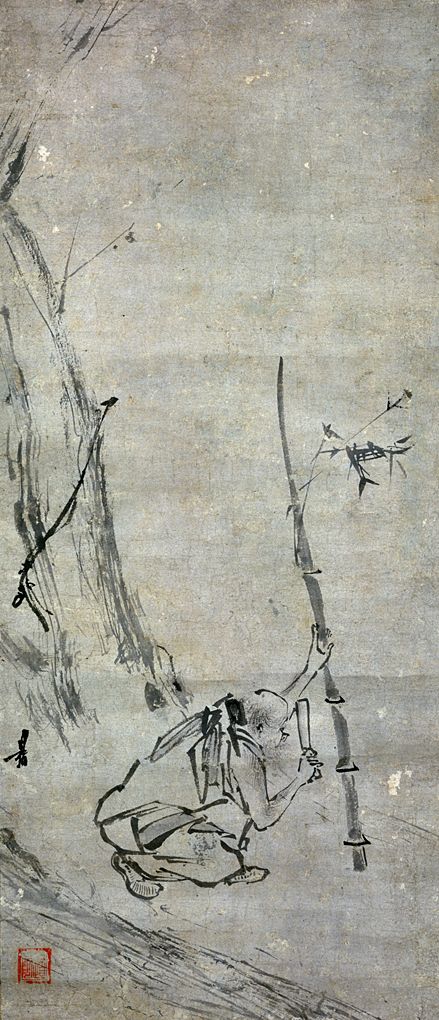
Once again, do not forget that what is translated here as “wisdom” is not what we almost automatically imagine to be a “text” of some sort, but prajna, which is our original, non-dual, buddha-nature. It could be described as an intuition from the standpoint of our buddha-nature. “Meditation” is a translation of the Sanskrit dhyana, and the Pali jhana. As understood by Huineng, it is not a particular type of meditation, but merely an indication that practice must focus on the mind. The Buddha had said that desires and fears lead us to attachments and a reification of “things” into entities endowed with independent existence (in order to, temporarily, reassure ourselves). So practice had to start with a curb on desires and fears so that attachments could be cut off. With the new assumption that we have within us a pure, non-dual, buddha-nature, which is our original nature/mind, and as such prajna, Hui-neng, and Zen after him, could focus straightaway on the “conceptual traces” left by karma on the mind, thereby “pointing directly to one’s mind,” as it “lets one see into one’s own true nature and thus attain Buddhahood.“
“Meditation is the body of wisdom, and wisdom is the function of meditation.” “Meditation” is at the same time what allows us to see our original prajna nature, and prajna’s own activity. As it is said about the organ and its function – the function creates the organ as much as the organ creates the function – meditation and prajna are really the same thing, structurally inseparable from each other.
Red Pine says that “Our mind is the body, our nature is its function. The Chinese character for ‘nature’ shows the mind giving birth. Thus, our mind is the source of all things, all dharmas, all thoughts. Our nature is the mind in action. Meanwhile, our mind is who we really are, our real body.”
Note that even though, with Hui-neng and Zen, the mind moves centre stage, there remains a need to behave ethically, as “unless you put an end to right and wrong, you will give rise to self-existent dharmas, you will never be free of the Four States (origination, duration, differentiation, and cessation)” (Ch. 13). Zen is not ethically amoral, it only emphasises a focus on the mind over an ascetic discipline of the body.
One Practice Samadhi
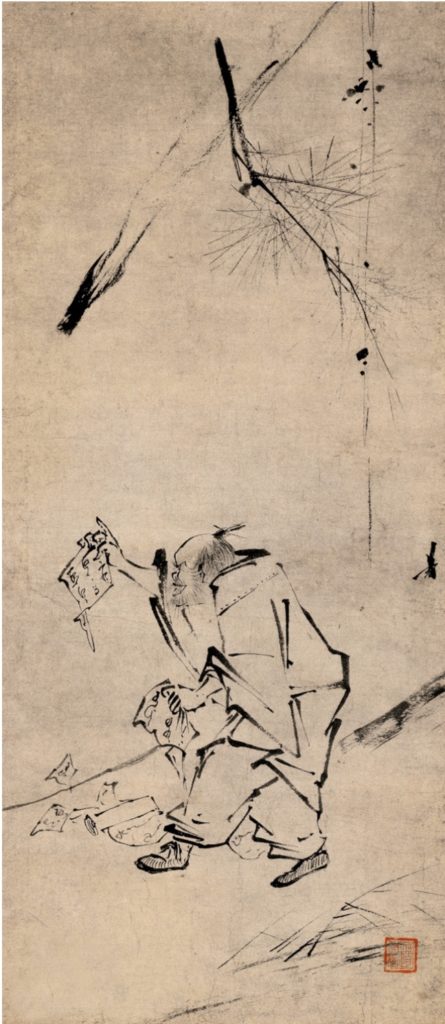
“Meditation,” then, is not a specific practice. It is not even, as most would have expected, a sitting practice.
Deluded people think that “sitting motionless, eliminating delusions, and not thinking thoughts are One Practice Samadhi. But if that were true, a dharma like that would be the same as lifelessness and would constitute an obstruction of the Way instead. The Way has to flow freely. Why block it up? The Way flows freely when the mind doesn’t dwell on any dharma. Once it dwells on something, it becomes bound” (Ch. 14).
This notion of a practice that has to flow freely in the context of our everyday lives is closer to the Daoist notion of a dynamic flow of energy going through all things than to the motionless trance depicted in the iconic Indian Buddha seated in the lotus position. “One Practice Samadhi means at all times, whether walking, standing, sitting, or lying down, always practicing with a straightforward [honest, sincere] mind” (Ch. 14).
Red Pine explains that Samadhi is “a Sanskrit term that refers to the concentration of the mind on a single object to the point where the separation of the object from the subject disappears.” Hui-neng retains the traditional meaning of a unity between the mind and all things, but rejects an approach that entails a deliberate meditation that separates the meditator from the object (s)he concentrates on, artificially creating a tension followed by a release wherein union is achieved. “For Hui-neng, it is the practice to be engaged in at all times in all places, namely the state of straightforward mind, which is no state at all.”
Meditation is not contemplation
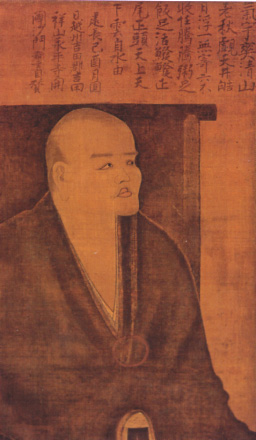
True meditation “at all times, whether walking, standing, sitting, or lying down,” is what 13th century Japanese Master Dogen, co-founder of the Soto Zen School, meant to establish in the daily routine of his monasteries. Whether eating, or sweeping up the yard, or washing, or even going to the toilet, monks performed all activities as an uninterrupted “meditation.” Soto Zen monks may also sit, but that sitting is understood more as a training for the uninterrupted day-long meditation than as a practice directly aiming at a dramatic event of [sudden] awakening. The Soto Zen school is in fact known for its practice of shikantaza, which means, “just sitting.” It is a practice that was developed in the Soto lineage in China before Dogen brought it to Japan and reworked it on the basis of his own experience. Shikantaza is specifically defined as not being a contemplation. When Hui-neng in the Platform Sutra, says: “In this school of the Dharma, when we practice Zen, we don’t contemplate the mind, and we don’t contemplate purity, and we don’t talk about being dispassionate”(Ch. 18), he was calling for that sort of practice. Shohaku Okumura describes this “just sitting” practice as follows: “Just as the function of a thyroid gland is to secrete hormones, the function of a brain is to secrete thoughts, so thoughts well up in the mind moment by moment. Yet our practice in zazen is to refrain from doing anything with these thoughts; we just let everything come up freely and we let everything go freely. We don’t grasp anything; we don’t try to control anything. We just sit” (Realizing Genjokoan, The Key to Dogen’s Shobogenzo). Contemplating the thoughts coming and going would turn then into objects, and set up a separation between them and us. What is being practiced in “just sitting” is “goallessness” rather than mindfulness.
Just as influential in the Zen tradition, however, is the very different practice found in the Rinzai school, which Hakuin (1686-1769) revived after a period of stagnation. Bret W. Davis tells us that “the Rinzai school, with its use of koans, teaches a more dramatic route through an intense state of meditative concentration …in order to cultivate the “great ball of doubt.” Koans are apparently irrational statements or stories presented as short exchanges between master and disciple, meant to shock the mind into “glimpses” (kensho) wherein the non-dual nature of the mind is directly intuited. Instead of being encouraged to relax into a state of “goallessness,” Rinzai practitioners are required “to break through all dualistic oppositions, of subject/object, inner/outer, pure/defiled, being/nothingness, speech/silence, etc … The entire world of relativities in which we live must be transcended … before it can be reaffirmed … The relation between emptiness and form must itself be understood non-dually … Even the duality between duality and non-duality must be let go of. To attempt to do this by means of analytical reason, however, only produces yet further dualities. This Gordon knot cannot be teased apart with the fingers of the intellect; it must be cut directly and holistically with the sword of intuitive wisdom” (Bret W. Davis – “Forms of Emptiness in Zen”).
With Zen, the Buddhist approach has become positive
With Zen, which grew out of the concept of buddha-nature, and also incorporated the Hua-yen view of reality as an interconnected network of mutually interpenetrating phenomena, the Buddhist path turned into a positive practice. In India, the Buddhist approach had been negative, with talk of craving, ignorance and suffering. Because we had karmic defilements, we had been reborn in this life, and, unless we worked hard at cleansing these defilements, we would be reborn, and suffer again. And it would be all our fault! With the reinvention of Buddhism in East Asia, in a culture nurtured by the abundance of the Dao, humans themselves came to be seen as possessing a pure, non-dual buddha-nature, ready to help them awaken to the beauty of the phenomenal world. India had said: existence is suffering; all things are empty of own being and impermanent. East Asia replied: “true emptiness, wondrous being.”
Sources
Red Pine (Bill Porter) – The Platform Sutra – The Zen Teaching of Hui-neng (2006)
Shohaku Okumura – Realizing Genjokoan, The Key to Dogen’s Shobogenzo (2010)
Bret W. Davis – Forms of Emptiness in Zen (Research paper)
